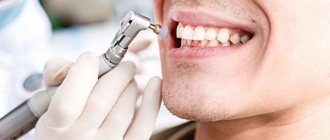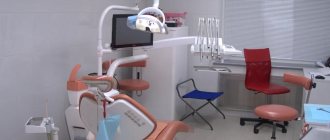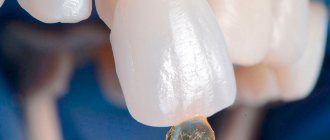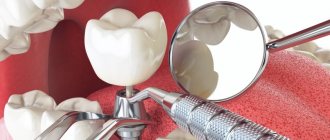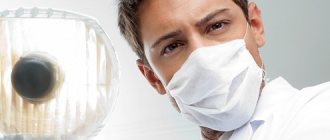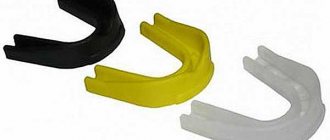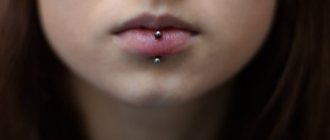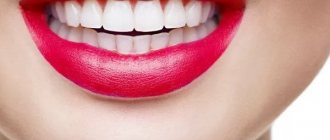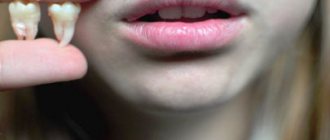The health of the dentition directly depends on the quality of care. The main prevention of oral diseases is regular cleaning. It is necessary to use toothbrushes, pastes, and floss daily. But home treatments are not enough for quality care. They do not allow you to remove hardened plaque and tartar. In modern dentistry, several methods are used to cleanse enamel. The Zuub Clinic offers its clients the safest and most effective technology.
Ultrasonic teeth cleaning allows you to qualitatively eliminate all formations, without harming the enamel, and acts as a preventive measure for major oral diseases.
What is ultrasonic teeth cleaning
The usual soft plaque that forms in the dentition can be easily removed with a brush or floss. But the formations harden over time and turn into stone. It is impossible to remove it with a brush. It is not possible to qualitatively remove plaque that contains components of tobacco smoke, coloring pigments of tea and coffee drinks. The use of chemicals creates a risk of damaging the enamel structure. This procedure is especially dangerous in case of increased sensitivity.
Ultrasonic cleaning uses a special device to remove plaque. Skyler creates an ultrasonic wave. Its length and frequency are selected by a qualified specialist for the patient personally, taking into account the condition of the enamel. Therefore, ultrasonic teeth cleaning is absolutely safe.
The wave, passing through a layer of plaque and stone, destroys their structure and forces it to separate from the surface of the teeth. After this treatment, formations are easily removed from the enamel. The wave penetrates into the interdental and subgingival spaces, fissures, and any hard-to-reach places. This ensures high quality processing.
Recommendations for choosing paste
It is no secret that the main function of toothpaste is to provide a cleaning effect achieved when brushing teeth due to the impact of the toothbrush bristles on the enamel surface. The paste necessarily contains various foaming agents. But most toothpastes not only clean a person’s teeth, but also have a healing effect on the oral cavity, which is why the toothpastes contain active ingredients. Many people don't know which toothpaste will do the job best. In fact, everything is banally simple: you need to choose the paste that suits you best.
How to choose toothpaste
When choosing this or that paste, first of all, you need to take into account the problems you are faced with. If a person has increased tooth sensitivity, then the best option for him would be non-abrasive toothpastes that contain strontium chloride. If you have problems with your gums, it is recommended to brush your teeth with pastes that have antibacterial properties. As a preventive measure against various dental diseases, it is advisable to choose fluoride-containing types of toothpastes. But they cannot be used on a permanent basis. Dentists recommend periodically changing different types of toothpastes.
- How often should you brush your teeth?
Fluoride toothpaste
On a note! High-quality teeth cleaning can be achieved with a small amount of toothpaste. It is enough to apply a small strip of cleaning agent (5-7 mm) to the bristles of the toothbrush. How to whiten yellow teeth you will find the answer in the link.
How often should you brush your teeth?
Ultrasonic teeth cleaning is an excellent preventive procedure that allows you to maintain their health and beauty and prevent diseases. The wave not only destroys tartar and plaque. It destroys pathogenic bacteria, eliminating the risk of creating a source of inflammation. During the procedure, pigment spots and layers of dyes are eliminated. Teeth become 1-2 shades lighter, which makes your smile more attractive.
The frequency of professional treatment depends on individual characteristics. Each person develops tartar at a different rate. Ultrasonic teeth cleaning is a safe procedure and can be performed from one to 4 times a year.
Cleaning the enamel is part of the preparation for dental implantation and prosthetics. Sometimes ultrasound treatment is required to process canals when installing a complex filling to ensure reliable fixation. In such cases, the procedure is prescribed by a specialist.
What is dental professional hygiene
C
This is a set of measures aimed at preventing caries and treating inflammatory diseases of the periodontal soft tissues. It is not always possible to completely remove layers on your own at home. They are present not only on the visible surface of the segments, but also form in the subgingival part of the crown and between the teeth. Therefore, it is impossible to remove them from hard-to-reach areas with a simple brush.
When performing work, a dental hygienist uses special dental instruments (mirrors, hooks, brushes, tweezers) and modern technologies. The most popular methods are the crushing of mineral deposits with an ultrasonic scanner and the air-abrasive method of removing soft, hard deposits using sandblasting equipment.
Price
The cost of ultrasonic teeth cleaning is determined individually; it depends on several factors:
- state of the dentition;
- availability of additional procedures;
- clinic categories.
If a dentist has to remove plaque and stones from all teeth, the cost of the procedure will be quite high. A patient who regularly undergoes professional treatment will not have to spend a lot of money.
After eliminating the formations, a number of additional procedures can be carried out: polishing, fluoridation, the cost of which is included in the total amount.
In high-category clinics, the price of cleaning is usually higher, since they employ highly qualified specialists and use effective drugs.
Features of professional cleaning from plaque and tartar
The work is performed by a dental hygienist, who, using special tools and solutions, removes all deposits from the surface, in the space between the crowns, and also from under the gums.
It is important!
If the patient has overly sensitive enamel, professional cleaning should be carried out no more often than once every twelve months.
After a complex of cleaning, the enamel becomes several shades lighter (do not confuse the procedure with whitening, these are still different things), the surface becomes smoother, shine appears, the general condition of the gums noticeably improves, and most importantly, the patient has a feeling of cleanliness of the oral cavity after a complex hygiene.
The professionalism of a dentist is not only to clean teeth and gums from hard stone, but also not to touch the deep layers of enamel, not to cause chips, cracks and loss of filling material.
Teeth brushing technology
The duration of the procedure depends on the amount of work. On average, ultrasonic teeth cleaning takes 40-50 minutes. The procedure includes the following steps:
- examination of the oral cavity, assessment of the condition of the enamel, selection of wavelength and frequency;
- distribution of a special preparation on the surface of the teeth;
- ultrasound treatment;
- polishing
The procedure does not cause pain or discomfort, and no anesthetic drugs are used.
Our clinic employs qualified specialists with extensive practical experience. They will accurately assess the condition of the enamel and correctly select a safe operating mode. A special gel is applied to the enamel to increase the effectiveness of the wave. With its help, tartar, thick plaque, and age spots can be eliminated faster.
Special pastes are used to polish teeth after brushing. The procedure allows you to give the enamel ideal smoothness, eliminate unevenness and microcracks. This will prevent the formation of plaque on the teeth and prevent its accumulation for a long time. If the enamel is weakened, fluoridation is performed to strengthen its structure.
What to expect during a hygiene visit?
During your initial examination and dental cleaning, our hygienist will review and evaluate your medical history to determine if there are any medical conditions that may affect your treatment.
At each subsequent visit, the Doctor will evaluate your oral health and note any changes. Each new patient visit begins with our specialists performing x-rays. If you are pregnant or have a medical condition that prevents you from having an x-ray, please note this in your medical record. If you have had an x-ray within the last 12 months, please send it to our dental clinic by email
or bring the study disc with you. Our goal is not to take an x-ray, but to have diagnostic material so that we can provide you, our patients, with a comprehensive dental examination and draw up a comprehensive treatment plan. The doctor will screen for oral cancer and oral lesions, and also test for oral symptoms of other serious diseases, including heart disease, cancer and diabetes. One of our dentists will conduct an examination of your dentition (dental examination) to look for possible new and recurring cavities. If one is found, conditions and treatment options will be explained to you. During a periodontal examination, your gums will be assessed for signs of gum disease by measuring the periodontal pockets with a probe. Our hygienists are trained and certified to administer local anesthesia to relieve discomfort during treatment, although this is rarely required as they have a very light hand and therefore a very gentle touch. As a rule, the simple use of desensitizers provides comfortable tooth brushing. At the end of your visit, the dental hygienist will teach, review, and reinforce proper oral hygiene techniques, including effective brushing and flossing. Our patients prefer to be treated by the same dentist. Regarding hygiene appointments, we support the same. Having the same professionals working with you regularly develops mutual understanding and continuity of dental care and knowledge of the individual needs of each patient.
How harmful is brushing your teeth?
Ultrasonic teeth cleaning belongs to the category of safe, gentle techniques that do not harm the enamel or the body. But before carrying out the procedure, consultation with a specialist is necessary, as there are certain contraindications. Processing cannot be carried out if:
- arrhythmias;
- ARVI;
- hepatitis, HIV, tuberculosis;
- implants, orthopedic structures;
- high enamel sensitivity.
This procedure is not performed on children and adolescents whose bite formation has not yet completed.
When to see a dental hygienist
The World Dental Organization recommends professional hygiene with a hygienist twice a year. This preventive measure makes it possible to prevent inflammation of hard tissues at the stage of stain formation.
You need to make an appointment with a hygienist in the following cases:
- An independently made decision for the purpose of prevention.
- When calcareous deposits and bacterial plaque are detected on the teeth.
- If you smoke a lot, drink coffee, tea: to remove pigment from the enamel and give it a natural color.
- Before prosthetics, in order to adequately select the shade of the crowns.
- If you have braces in your mouth (in this case, you should visit the dental hygienist every 3 months).
- By referral from a dentist before treatment of caries and its complications.
- Before implantation of artificial roots, in order to reduce the risk of infection.
- Before any invasive interventions in the oral cavity.
Stages of the procedure
- applying topical anesthesia to the gums to reduce their sensitivity,
- treatment of teeth with the tip of a device that delivers ultrasonic waves: they literally crush hard stone into small pieces, which is washed away with water. Ultrasound is used to remove deposits only from under the gums, otherwise the bracket plates may peel off and even break.
- treatment of teeth and gums with a water-abrasive Air Flow stream: it is directed both to the gums and teeth, and to braces. The device acts like a home irrigator, but copes with dirt much better. The doctor uses a stream with slight pressure so as not to accidentally disturb the fixation of the braces on the teeth during the procedure,
- enamel polishing: a brush with a rotating head and a special paste are used,
- A fluoride-containing gel is applied, which strengthens the enamel and temporarily protects it from bacterial attack.
In general, if you have a braces system, the complex of professional hygiene is carried out in a completely standard way, with the only exception: the doctor is required to be extremely careful, because the procedure should not disturb the fixation of the braces.
The emphasis when carrying out preventive cleaning is on the use of Air Flow technology, which, in the presence of a brace system, is considered safer and more effective.
The duration of teeth cleaning is about an hour.
Don't forget to drink water
Pure water quenches thirst well, refreshes the oral cavity and does not contribute to the appearance of plaque, unlike tea and coffee. If the mucous membrane of the lips is sufficiently moisturized, it is not susceptible to drying out (especially in winter, when indoor air is dry), which means there is less risk that the orthodontic system will cause irritation.
All these rules are simple, and you get used to them within the first few days after starting treatment. Once adapted, they are easy to follow and do not interfere with your active life. In addition, the habit of brushing your teeth thoroughly remains, as a rule, for life, which also contributes to maintaining health.
More articles:
- Back to the orthodontist? All about re-treatment
- What hurts more: braces or aligners?
Brush your teeth after eating and drinking
This is the basis of the basics, the main rule of the orthodontist patient. You don't have to brush your teeth except after drinking water. If you have 3 main meals and 2 snacks during the day, then there should be 5 brushes and pastes. Only in this case will it be possible to wear braces or aligners for 12–15 months without harming your teeth.
Most of the food remains in the braces, and among all the systems, the most inconvenient in this sense are ligature ones. The arch is attached with rubber bands (ligatures), because of this, the braces themselves occupy a large surface of the tooth, food gets under the arch and under the ligatures.
Modern non-ligature braces are more convenient. They are small in size, their clasps into which the arc is attached are smooth, so large pieces of food usually do not get stuck in them. But you still need to brush your teeth constantly.
And removable aligners do not affect the nutrition process at all. The main thing is not to leave them wrapped in a napkin while eating (this can cause them to break). But with this system, you won’t be able to avoid brushing: after all, you need to put the aligners on your cleaned teeth immediately after eating.
What to do if you spend a lot of time away from home, at work or traveling? The solution is elixirs and other mouthwashes, disposable brushes with paste already applied to them. If you have absolutely nothing on hand, you can get by with rinsing with water. But this should not become a system.
Patient reviews
“I was afraid to clean it, I thought that the braces would fall off from the water pressure. But the doctor insisted and everything really went well. The braces didn’t come off, and my teeth became much cleaner.”
Alexandra, 24 years old, Voronezh
“I have always had problems with my gums, even before braces. With braces, the inflammation worsened, so cleaning was mandatory. Plus regular rinsing, care and treatment procedures probably took me at least half an hour a day. But after I took off the braces, there was no caries, and the situation with the gums didn’t get any worse.”
Read also: Bleeding gums between teeth
Marina N., Novgorod
“The doctor did the cleaning for me at the same time as replacing the arc - every time or every other time. They didn’t damage anything, but the sensations were very pleasant, there was such relief on the teeth, as if the braces had been removed))”
Urta, from correspondence from forums
Avoid improvised means
If you don’t have a brush or toothpick at hand, you shouldn’t try to remove a stuck piece of meat with a straightened paper clip or needle. This is dangerous both for the braces system and for your own health. You can use special dental floss. When wearing a non-removable structure, its tip can be placed under the arch. Such cleaning requires care, otherwise you can tear the arc out of the grooves.
This is how you floss your teeth if you have braces.


